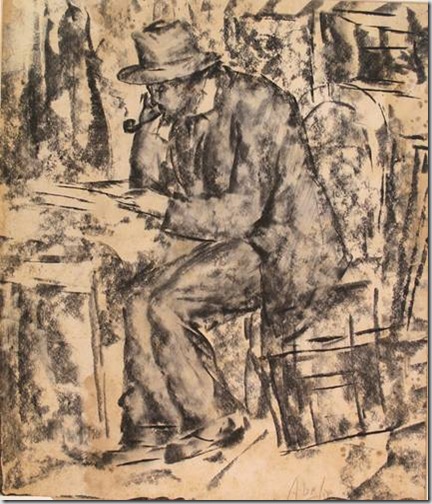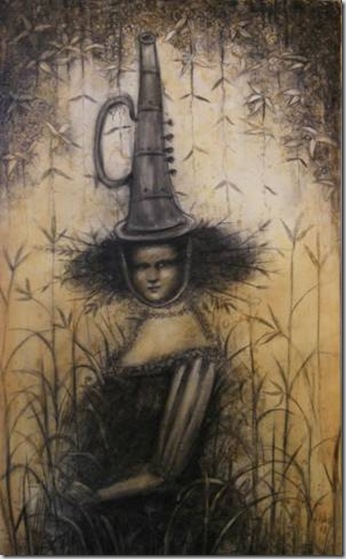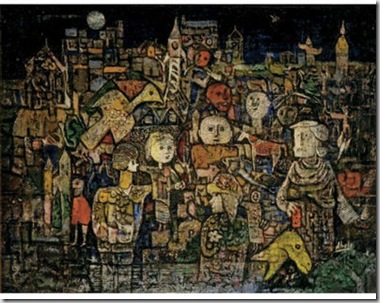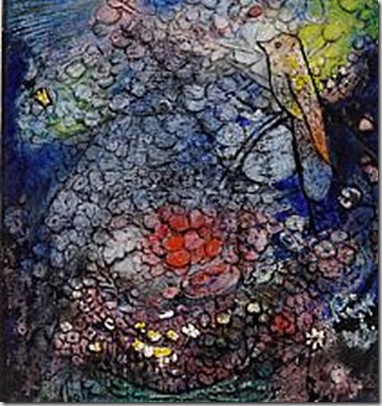Guajiros In the second half of the 1930s Abela returned to painting, employing a naturalistic style influenced by early Renaissance painting and the Mexican mural movement. At this time he focused on an idealized view of the Cuban peasant and the countryside, as seen in his most renowned painting, Los guajiros (1938). In 1937 he directed the short-lived Free Studio of Painting and Sculpture, which briefly offered an alternative to the elitist and highly structured artistic training provided by San Alejandro.
Abela served as Cuba's cultural attache to Mexico from 1941 to 1946 and to Guatemala from 1947 to 1952. The last and most productive phase of his artistic career began in the early 1950s and lasted for a decade. This so-called magic period was characterized by an expressionistic representation of a fantasy world inhabited by women, children, and animals.
The paintings and caricatures of Abela have been extensively exhibited in Havana since the 1920s, and to a lesser extent in Spain. France, Mexico, Guatemala. and the United States. He won a number of awards for his paintings, including prizes at the National Salons of 1938 and 1956. His works are housed in numerous private collections in Cuba, where he is also well represented at the National Museum in Havana. Outside of Cuba, his paintings reside in private collections in the Caribbean, Central America, the United States, Spain, and France.
Vedere qui












Nessun commento:
Posta un commento